Most guitarists usually learn their first chords by rote memorisation. In other words, they learn to play the chords with no real understanding of the chords they are learning. And to be honest, that’s a fantastic place to start! This is because you can learn a few chord shapes and start making some music fairly quickly.
Although learning chords just by memorising the chords shapes is a great starting place, it can be extremely limiting for a few main reasons…
- It’s impossible to totally understand WHY chords are called what they are if you don’t understand the theory behind them. This lack of basic understanding of chord construction can lead to massive confusion if you want to learn more advanced musical concepts.
- It becomes harder and harder to learn new chords. Sure, it’s pretty easy to memorise a few dozen chords by shape alone. But if you need to memorise hundreds or even thousands of chords, it’s FAR easier to remember them if you actually understand what you are learning.
- It stops you from developing your full potential as a musician. Understanding some chord theory really helps you to expand your knowledge of music. And this can often help you to become a better player, composer, improviser or arranger.
Introducing Major Triads
The word “triad” is just a fancy name for certain chords that contain three notes.
In this guitar lesson, we’re going to take a closer look at what is possibly the most common triad…the major triad.
Luckily, major triads are pretty easy to understand. A really quick-and-dirty way of working out the notes of a major triad is to do the following…
- Write down the notes of the major scale that has the same root note as the chord you are wanting to work out. For Example: If you wanted to work out the notes of a C major triad, you would write down the C major scale.
- Take the first, third and fifth notes from the major scale that you wrote down. These are the notes of the major triad.
Pretty easy huh?
A Few Examples
Let’s now take a look at some of the chords that you might have learnt when you first started playing the guitar. This will help you to understand the theory in a more practical way…
Example 1: The C Major Triad [C E G]
If you check out the table below, you’ll notice that I have written out the notes of the C Major scale. I have also highlighted the first, third and fifth notes. (These notes form a C major triad).

Let’s now check out a C major chord shape that you might already be familiar with…
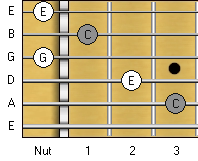
Notice how this C major chord is made up of just three notes…
- C
- E
- G
Even though this specific way of playing a C major chord has five notes, I still consider it to be a triad because there are only three different notes. (The C-note and E-note are repeated).
Side Note: Don’t get hung up on this. I use the terms C major chord and C major triad interchangeably. In other words, call it what you prefer calling it!
Below, I’ve done a similar process for four other common major chords. For each example I’ve given, I recommend comparing the table to the chord diagram. Notice that in every case the chord shown in the diagram is constructed from the first, third and fifth notes of the major scale.
Example 2: The A Major Triad [A C# E]

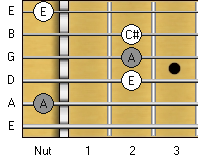
Example 3: The G Major Triad [G B D]

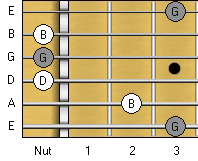
Example 4: The E Major Triad [E G# B]

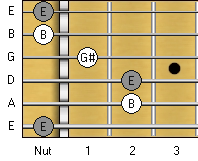
Example 5: The D Major Triad [D F# A]

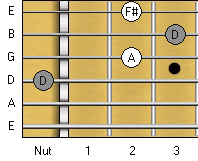
A Few Last Words
That’s all for now. I hope you enjoyed this little tidbit of guitar chord theory. In future articles, we’ll be taking a look at other chord types. But for now, just have fun with major chords!
Are You An Auckland Guitarist That Wants To Significantly Improve Your Electric Guitar Playing?
 If you're an Auckland guitarist wanting to improve your guitar playing, then my Auckland electric guitar lessons might be for you. I can help you to the develop technique, musicianship and mindset that will move you closer to how you truly want to play.
If you're an Auckland guitarist wanting to improve your guitar playing, then my Auckland electric guitar lessons might be for you. I can help you to the develop technique, musicianship and mindset that will move you closer to how you truly want to play.
To find out more about exactly how I can help you improve your playing, then download my latest Auckland guitar lessons info pack below...
